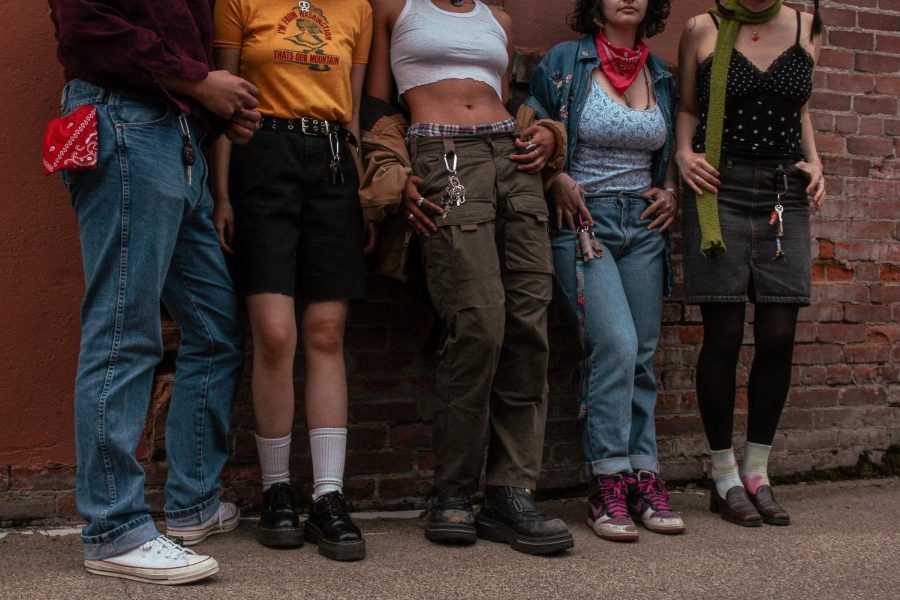Queer Flagging: The Secret Language
May 30, 2023
Director: Kai Warouw
Photographer: Morgan Barnaby
Models: Adrian Bernal Canales, Arian Ghorbani, Claire Glazer, Draken Reeves, Kai Warouw, Madison Talton, Mo Mojica, Yulee Nishimura
Are you looking for some fun with a special person just for the night? Well, if it were the ‘70s or ‘80s (or maybe even earlier than that), you might just find what you’re looking for by peeking at someone’s back pocket. No, seriously.
“Flagging,” according to “Queer Events,” a national organization steered to educate and inform people about LGBTQ+ issues, can be described as nonverbal communication through accessories and clothing–often to communicate sexual desires, but not always.
Popularly used by queer men, the hanky code (also known as the bandana code), was a way for these individuals to find a sexual partner to engage in shared sexual fantasies with. It was a way to find your match, or to put it bluntly – the top to your bottom.
Red, Yellow, Blue, Green, Orange – back right pocket, back left pocket; there was a bandana color and pocket placement for most sexual desires and fetishes.
For lesbians and queer women in general, the “key code,” was prevalent. Wearing one’s keys on a chain or carabiner was just another way of letting people know what you like. Hanging your keys on your left side symbolized your preference for being a top, while wearing it on your right meant you were a bottom.
Truthfully, queer flagging never stopped. Oregon State’s Graduate Studies Director and Professor in the Queer Studies program Dr. Qwo-Li Driskill mentions that “femme flagging,” is still relevant. As explained by “Queer Events,” femme flagging often refers to queer women painting certain fingernails a different polish color from the rest.
In a country that is rapidly passing anti-LGBTQ+ and anti-sexual health laws, will the queer community return to their flagging roots by means of survival and safety?
“It’s dangerous, and often deadly, to be LGBTQIA+ in a cis heterosexist world,” Dr. Driskill said while discussing the importance of non-verbal communication within the Queer community. “Queer and trans codes aren’t just about sex, there are all kinds of in-community codes and languages.”
The LGBTQ+ community has historically deviated from societal norms, and these codes are an example of just that. Flagging is used by means of not only sexual desires, but protection and survival as well.



